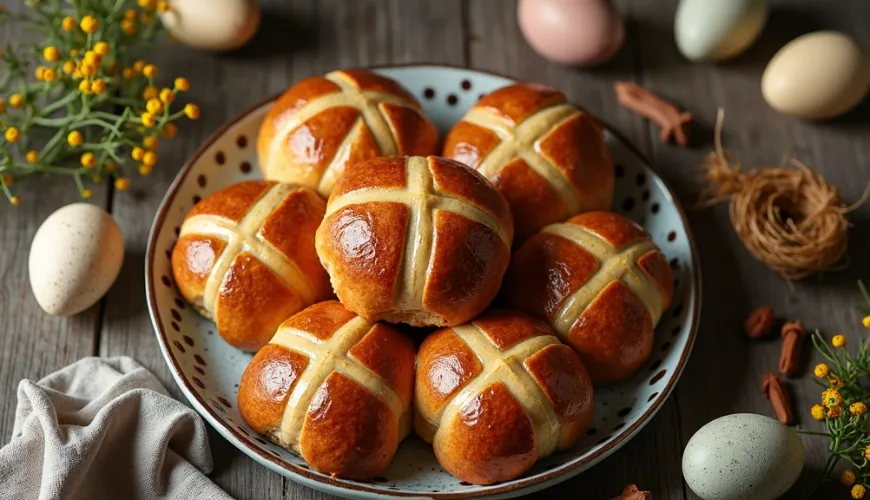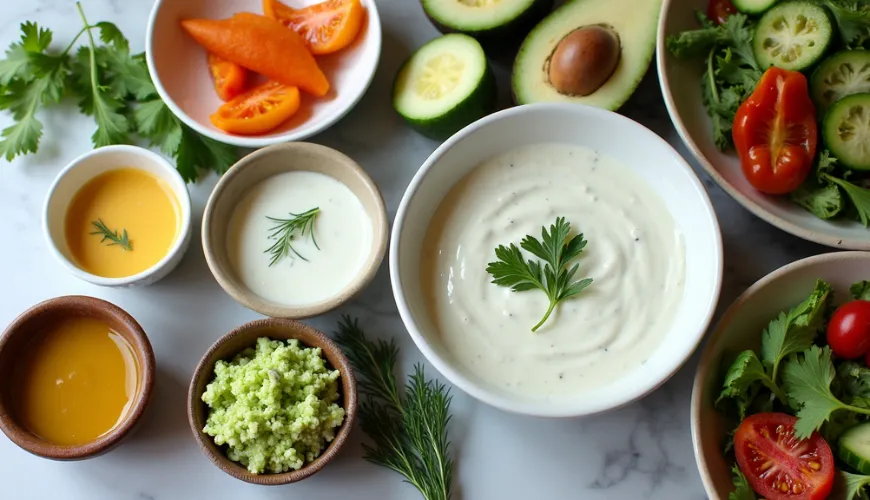
How to Enjoy Hot Cross Buns All Year Round

The History and Charm of Easter Hot Cross Buns - Why It's Worth Baking Them at Home
Easter is not just about the Easter whip and egg coloring. In many countries, especially in English-speaking cultures, sweet buns with a cross, known as hot cross buns, hold a special place. These fragrant, lightly spiced buns with raisins or candied fruit are traditionally baked on Good Friday, but their popularity transcends both holidays and national borders. You may have come across them under the English name, or you might have stumbled upon a slightly mixed-up query like hot buns cross – either way, they are definitely worth your attention.
The story of hot cross buns goes deep into history. As early as the 12th century, a monk in England is said to have marked Easter buns with a cross of sweet icing as a symbol of the crucifixion. Later, the pastry became so popular that it appeared not only in churches but also at markets and on home tables. It was even banned at the English court outside of religious holidays due to its symbolism and growing popularity. Today, these buns are part of the Easter tradition not only in Britain but also in Australia, New Zealand, South Africa, and increasingly in our regions.
What Makes Hot Cross Buns So Special?
At first glance, they are ordinary leavened pastries. But anyone who tastes them quickly understands that they are more than just a sweet bun. Hot cross buns have a distinct flavor palette – subtle notes of cinnamon, nutmeg, and sometimes cloves blend with raisins, candied orange peel, or dried cranberries. And then there's the cross. It's not just decoration – it symbolizes the Christian Easter and also connects the past with the present. And although today there are many variations – chocolate, apple, or vegan – the basic recipe remains almost unchanged.
Interestingly, these buns are associated with several superstitions. For example, it is said that if you hang a hot cross bun in the kitchen, it will protect the house from fires. Another legend claims that if two people share a bun, they will remain friends forever. And even if one does not believe in the magical power of pastries, nothing smells at home as festive as freshly baked fragrant buns with a cross.
How to Make Hot Cross Buns at Home?
At first glance, the recipe might seem complicated, but in reality, it's about classic leavened dough, just with a few pinches of spice and an emphasis on patience. The biggest challenge is drawing the cross – it's usually made from smooth dough or flour paste, which is piped onto the buns before baking. After baking, they are often brushed with a sweet glaze of sugar and water, which gives the surface shine and extends their softness.
Recipe for Traditional Hot Cross Buns:
Ingredients:
- 500 g plain flour
- 75 g sugar
- 1/2 teaspoon salt
- 1 teaspoon cinnamon
- 1/2 teaspoon allspice or nutmeg
- 7 g dried yeast
- 300 ml milk (lukewarm)
- 50 g butter (melted)
- 1 egg
- 150 g raisins or dried fruit
- grated zest of one orange
For the cross:
- 3 tablespoons flour
- 3–4 tablespoons water
For the glaze:
- 2 tablespoons sugar
- 2 tablespoons water
In a bowl, mix flour, sugar, salt, and spices. Add yeast, lukewarm milk, melted butter, and egg. Work into a smooth dough, then let it rise for about an hour in a warm place. After rising, incorporate the dried fruit and orange zest. Divide the dough into equal pieces, shape into buns, and place on a baking sheet. Let rise for another 30 minutes. Meanwhile, prepare the dough for the crosses – mix flour with water to create a paste, and use a piping bag to apply it on top of the buns in a cross shape. Bake for about 20 minutes at 200 °C. After baking, brush with the glaze of sugar and water.
The result will be fragrant, soft, and beautifully glossy Easter buns that captivate not just with their appearance but with their deep tradition.
Not Just for Easter - Why Fall in Love with Hot Cross Buns Forever?
Interestingly, in some countries, hot cross buns have become such a delicacy that bakeries offer them all year round. In Australia, for example, as early as January – long before Lent begins – various versions of these sweet buns flood the shelves. And people buy them not just as a festive treat, but regularly for breakfast or a snack.
In the Czech context, we may not have a direct analogy to these buns, but their taste and significance are comparable to something like a Christmas bread or mazanec. Unlike Christmas bread, however, hot cross buns have one key advantage: they are smaller, easily portable, and perfect as a quick breakfast on the go, a dessert with coffee, or a pastry for the Easter basket.
Additionally, there are many ways to vary them – from using fresh apples, chocolate pieces, to gluten-free or vegan versions. So if someone avoids classic desserts made with white flour or animal products, they can prepare their own custom-made hot cross buns.
One reader of the British newspaper The Guardian described how her family competes every Easter to bake the best batch: "It's something between a family competition and a ritual, where each of us has our 'secret ingredient' – once it was orange liqueur, another time freshly ground spices." Perhaps that's the charm of this pastry – it connects generations, allows for creativity, and simultaneously maintains tradition.
And if you're wondering why some search engines display a slightly mixed-up phrase like hot buns cross, know that it's usually due to machine translation or inaccurate keyword entry. That's why it's essential to turn a dry phrase into something tasty and meaningful – and what is more meaningful than a fragrant Easter tradition that you bake yourself?
When browsing Easter markets or pastry shelves in the supermarket, you might come across industrial versions of these buns. But nothing compares to the aroma that fills the house when the dough rises and bakes in the oven. Whether you decide to stick to the classic recipe or adjust it to your own tastes, one thing is certain – hot cross buns are not just pastry, they are little pieces of history that tell a story in every bite.

